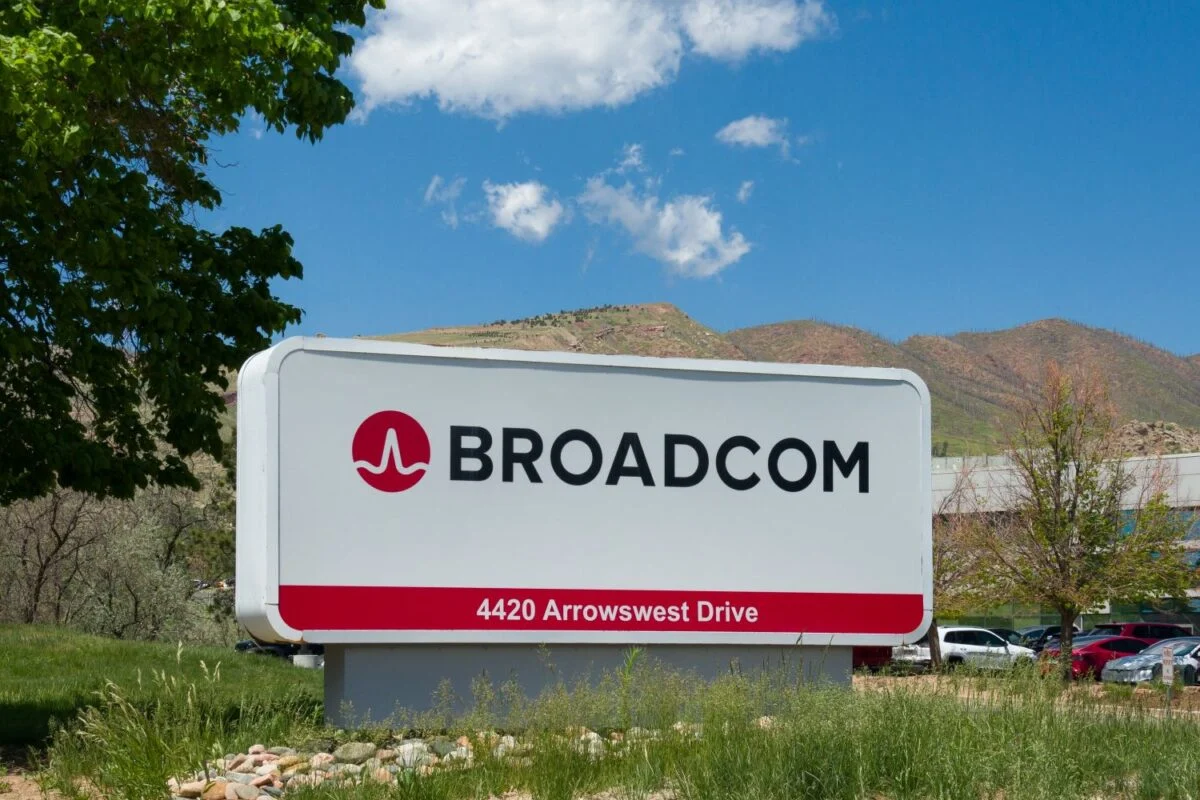TLDR
- Broadcom reported Q3 FY25 revenue of $15.95 billion, up 22% year-over-year, with AI semiconductor revenue hitting $5.2 billion, a 63% increase.
- The company announced a $10 billion AI chip collaboration with OpenAI on October 13, sending shares up nearly 10% and reinforcing its position in custom AI accelerators.
- Broadcom guided Q4 AI semiconductor revenue to $6.2 billion, putting its FY25 AI revenue run-rate near $20 billion with a backlog of $27.5 billion in remaining performance obligations.
- Wall Street maintains a Strong Buy rating with 27 Buy recommendations, and price targets ranging from $372 to $460, representing 13% to 35% upside potential.
- The company generated $7 billion in free cash flow in Q3, representing 44% of revenue, while trading at a forward P/E of roughly 80x compared to the sector average of 30x.
Broadcom stock has surged roughly 50-70% in 2025, hitting around $345 per share as of October 23. The semiconductor giant’s AI-focused strategy is paying off in a big way.
The company’s October 13 announcement of a 10-gigawatt AI chip collaboration with OpenAI sent shares soaring nearly 10% in a single session. The deal, estimated at over $10 billion, focuses on building custom accelerators for AI applications.
Just one day later, Broadcom unveiled “Thor Ultra,” an 800G Ethernet networking chip designed specifically for AI data centers. The back-to-back announcements reinforced the company’s position as a key player in AI infrastructure.
Broadcom’s Q3 FY25 results showed revenue of $15.95 billion, up 22% year-over-year. AI semiconductor revenue alone reached $5.2 billion, representing 63% growth.
CEO Hock Tan pointed to “strong and accelerating” AI demand when management boosted Q4 revenue guidance to approximately $17.4 billion. That represents a 24% increase compared to the same period last year.
The company now expects its FY25 AI revenue run-rate to approach $20 billion. Q4 AI semiconductor revenue is projected at $6.2 billion.
Backlog and Cash Flow Tell a Growth Story
Broadcom disclosed remaining performance obligations of approximately $27.5 billion. About 34% of that backlog is expected to be recognized within the next 12 months.
The company generated $7 billion in free cash flow during Q3 alone. That represents a 44% margin relative to revenue.
This level of cash generation provides fuel for continued investment while maintaining shareholder returns through dividends. The operational efficiency is helping justify the premium valuation.
Broadcom’s market capitalization has reached $1.6 trillion, making it one of the largest tech companies. Only Nvidia surpasses it in the semiconductor space with a $2-3 trillion valuation.
Unlike pure chipmakers, Broadcom’s VMware software business contributes roughly 42% of revenue. This diversification provides steady cash flow beyond the cyclical semiconductor market.
Wall Street Goes All-In on AVGO
Nearly 90% of analysts covering Broadcom rate the stock as Buy or Overweight. The consensus includes 27 Buy ratings, two Holds, and zero Sells.
JPMorgan raised its price target to $400 while Piper Sandler moved to $375. Macquarie initiated coverage with a $420 target.
The most bullish calls come from KeyCorp and Barclays at $460 and $450 respectively. These targets represent 30%+ upside from current levels.
The MarketBeat consensus target sits around $372, implying roughly 7% upside. Even the most bearish recent target from Wells Fargo sits at $345, representing minimal downside.
Analysts are calling Broadcom the “king of AI custom chips.” The company’s focus on inference computing rather than just training workloads sets it apart.
Valuation Remains Rich Despite Growth
Broadcom trades at a forward P/E of roughly 80x compared to the sector average of around 30x. The premium reflects expectations for sustained AI-driven growth.
The company’s forward PEG ratio of 1.71 sits about 5.5% below the sector median. This suggests the growth rate may justify the elevated multiple.
Consensus EPS forecasts point to 30-40% normalized annual growth over the next several years. Even with a flat or slightly contracting multiple, that earnings expansion implies 25%+ upside potential.
Some caution exists around the valuation. Bernstein’s Stacy Rasgon warned that “expectations were already high” given the premium multiple.
A CISPE antitrust complaint in Europe over the VMware acquisition and ongoing U.S.-China tech tensions add to investor concerns. Technical indicators showed overbought conditions in mid-October.
The Philadelphia Semiconductor Index has hit fresh highs on the AI wave. Broadcom’s outperformance reflects its unique position serving hyperscalers with custom silicon and networking solutions.
OpenAI CEO Sam Altman stated that “partnering with Broadcom is a critical step in building the infrastructure needed to unlock AI’s potential.” The collaboration reinforces Broadcom’s role in the AI buildout happening across major tech companies.






